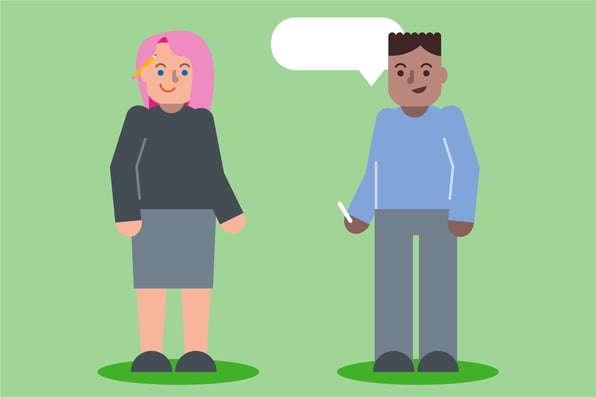
Improve Collaboration (and Save Time) with a Stand-up Meeting
Take a cue from the Agile movement to stay aligned on instructional initiatives and student progress.

The best school leaders know collaboration is key.
As decades of research from The Consortium on Chicago School Research points out, collaborative teachers are one of five evidence-based factors needed to drive school improvement.
Additionally, a 2015 study of 336 Miami-Dade County public schools, published in the American Educational Research Journal, revealed, “Teachers and schools that engage in better quality collaboration have better achievement gains in math and reading. Moreover, teachers improve at greater rates when they work in schools with better collaboration quality.”
But effectively collaborating with colleagues doesn’t have to take up hours from your day or week. Taking a cue from the Agile movement, educators can increase collaboration while saving time by implementing a daily or weekly stand-up meeting, also known as a “scrum.”
A stand-up meeting happens at the same time every day or week (regardless of who cannot attend), lasts no more than 15 minutes, and is designed to increase velocity on projects through efficient communication.
Stand-up meetings are a tool the ThinkCERCA team uses every day to quickly check in on projects and goals—and one your instructional team can use to stay aligned on instructional initiatives and individual student progress.
Here’s how it works:
- Everyone stands in a circle facing one another.
- Use a token, stick, or piece of chalk to indicate whose turn it is to speak.
- Going around the circle, everyone answers the following three questions:
- What did I accomplish since the last meeting?
- What will I accomplish before the next meeting?
- What obstacles are preventing progress?
For more on stand-up meetings, check out:
- Why the Three Questions in the Daily Scrum Meeting?
- 5 Scrum Meeting Best Practices: Master the Daily Stand-Up
- 7 Mistakes During the Daily Stand-up Meeting
- 5 Principles for Approaching School Improvement Like an Entrepreneur: Learnings from 'The Lean Startup'
- How Selling Milkshakes Can Help Us Select Better Ed-Tech Products
[This post comes from our monthly Education + Entrepreneurship newsletter. Sign up here and get content like this delivered once a month to your inbox.]

Elizabeth Riley Boyer is an experienced journalist, digital content strategist, and operations manager. Prior to joining ThinkCERCA, she was part of the founding team at Impact Engine, Chicago’s first social impact investment fund and accelerator. As Impact Engine’s Director of Operations & Communications, Elizabeth oversaw the company’s overall processes, day-to-day planning and finances, curriculum development, marketing strategy, and community outreach.
Elizabeth also spent three years at Chicago magazine, most recently as its Digital Engagement Editor, where she managed the organization’s social media and reader engagement initiatives. Elizabeth also works as a freelance content strategist, writer, and communications consultant. Her recent writings on impact entrepreneurship have been featured by the Huffington Post and Crain’s Chicago Business.
In 2007, Elizabeth helped open a private school for underprivileged children while volunteering for a nonprofit organization in the Dominican Republic. This experience inspired her to quit a paper-pushing job at an insurance brokerage firm to pursue a master’s degree in journalism from Northwestern University. Elizabeth also holds a bachelor’s degree in American studies from the University of Texas at Austin.
